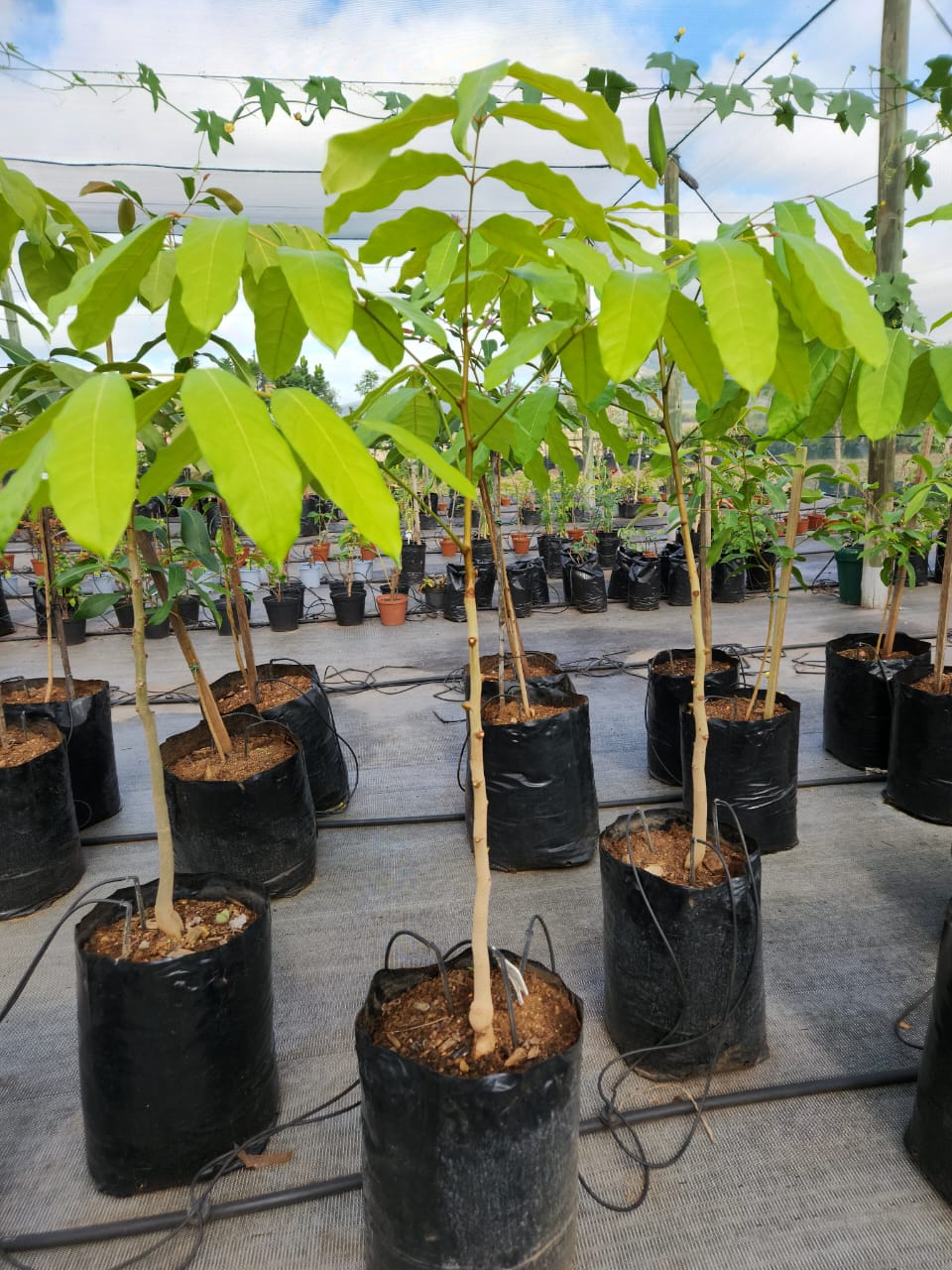East African Mahogany (Oos-Afrikaanse Mahonie) #
Khaya anthotheca | Khaya nyasica

Quick Info #
- Distribution: from Congo to Zimbabwe – evergreen forests and river forests, usually close to water
- Family: Meliaceae
- Florescence: September to December
- Fruiting: March to September
- Leaf habit: evergreen or semi-deciduous
- Name origin: “anthotheca” is Greek for the covering of the flower
- Other names: red mahogany, rooimahonie
Description #
The East African mahogany is on the larger end of the spectrum of tree sizes – up to 30m in a garden but 60m in the woods. Mature specimens are buttressed. The tree has 2–7 pinnas per smooth-feeling, glossy leaf and modest, sweet-smelling white flowers.
The smallish fruit is part of what makes the tree distinctive. It has a round, woody capsule, and splits open to release seeds. Young bark is generally smooth on branches while older bark can flake off. The wood is reddish-brown with an attractive grain.
Uses & Ecology #
The tree is exploited in East and West Africa – its wood is important for timber usage there and in other places. The good-looking wood makes a variety of nice furniture like desks and chairs. It sees some use in the construction industry, too. It is resistant to termites.
Farmers may use the trees as organic windshields for the first eight years of their lifespans. Larvae of Charaxes brutus natalensis eat the leaves.
Considering the fast growth rate of the tree, it can add organic shade to a garden relatively quickly. The bark is of bitter taste and used in traditional medicine – a drinkable infusion treats fevers and colds, for instance, and the bark is applied to ulcers and sores. It is said that the leaves have been used to make arrow-poison.
Seed oil is rubbed into the hair to kill lice. Root decoctions are also drunk to treat various ailments.
References #
- Useful Tropical Plants (2024) Khaya anthotheca. Available at: https://tropical.theferns.info/viewtropical.php?id=Khaya+anthotheca (Accessed 20 October 2025)
- Van Wyk, B & P. (1997) Field Guide to Trees of Southern Africa. Cape Town: Struik Publishers.
- Van Wyk, B. & P. (2008) Identifiseer die Bome van Suider-Afrika. Cape Town: Struik Publishers.
- Venter, F & J.A. (2002) Benut on Inheemse Bome. Pretoria: Briza Publications.
Caution: Consult a qualified health practitioner before considering medically using or ingesting any plant parts. Any mentioned traditional uses are based on cultural practices and anecdotal evidence. They are not necessarily clinically proven or supported by modern scientific studies.